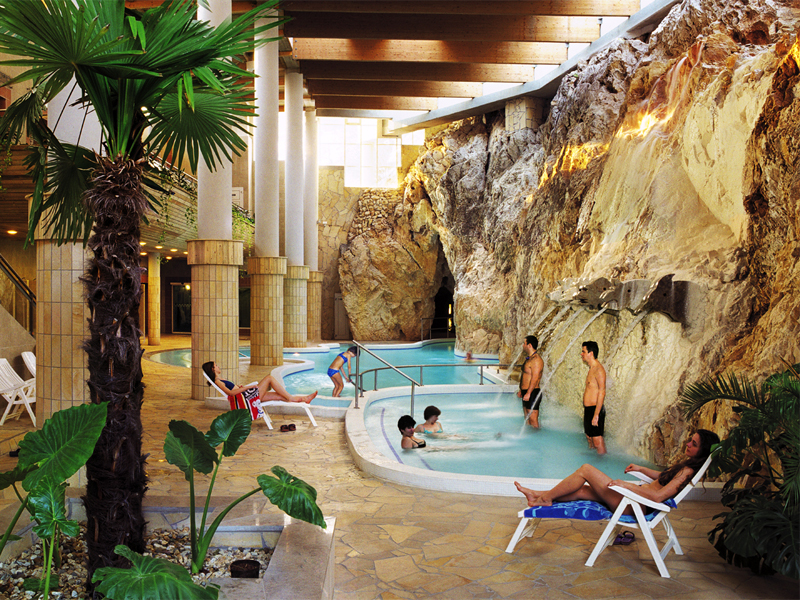PannErgy and Mannvit find hot water at Miskolc in Hungary
Hungarian geothermal development company PannErgy finds hot water at its geothermal district heating project at Miskolc, Hungary. There might even be an opportunity to generate electricity from the project.
In news from Hungary it is reported that PannErgy, a Hungarian geothermal development company has announced the results of the geothermal drilling at Miskolc-Mályi, which are about three times larger than the company’s former conservative forecast. PannErgy said it would need fewer wells than originally expected, adding that the finding is sufficient to produce electric power. Icelandic engineering group Mannvit is working in partnership with the company.
PannErgy said it reached the targeted bottom depth at Miskolc-Mályi at 2310 meters on 23 August.
“After further deepening, the geophysical measurements and primary tests have confirmed that in the vertical range of 2,270-2,310 meters there is a geothermal reservoir with hot water of 110-120 degrees Celsius temperature, and its yield reaches 4,200-5,400 litres/minute (cc. 70-90 l/s),” the company said in a statement on the website of the Budapest Stock Exchange (BSE) today.
“The result of the drilling significantly exceeds PannErgy’s former conservative expectations, being approximately three times larger than that. On the one hand, the high water yield allows the implementation of the entire geothermal heating project of Miskolc by drilling only five of the initially planned seven wells, and it is sufficient to produce electric power,” the company added.
According to PannErgy’s calculations, after the beginning of the 2011 heating season EBITDA of the project will be HUF 650-850 million (US$2.9-3.8million) depending on the primary heat sales, whereas from 2012 it can be HUF 1 billion annually. Electric power generation can potentially add an additional HUF 300 million (US$1.3million) to EBITDA.
The capacity of the production well is approximately 16.19 MW with the heat output of the water cooling down from 110°C to 55°C. With the same heat output system the performance of the two planned production wells can be up to 35 MW. In the winter service period, this capacity allows the selling of 410,000 GJ primary heat. Currently, PannErgy has a 20-year contract to sell a maximum 300,000 GJ of heat to the District Heating Supply Company of Miskolc.
In the projected cascade-type system of hot water utilization, after the primary use, which means mostly the heating of the residential and public buildings that are connected to the district heating network of Miskolc, the water having cooled down to 55°C is still suitable for the heating of business facilities (warehouses, greenhouses). To such secondary consumers, an additional heat quantity of 210,000 GJ can be sold, while the temperature of the water drops from 55°C to 25°C during the heat output. According to our calculations, the price of these services can be about half of the prices calculated for the primary market.
Taking into account the outstanding water yield, PannErgy has started to examine the alternative production of electric power in the summer network service period, as a result of the 15-17% efficiency of such production the achievable net capacity can reach cc. 3 MW. The additional EBIDTA generation capacity of electric power production may be HUF 300 million (US$1.3million) annually.
With the aim to provide geothermal energy for the district heating system of Miskolc, PannErgy started the well-drilling at Mályi in May 2010, and it took about 100 days to reach the targeted depth. The works have been performed with state-of-the-art equipment suitable for drilling down to cc. 3000 meters in order to find a water reservoir of favourable characteristics that may produces considerable quantities of energy.
According to the preliminary measurements, the target zone of the exploration was under the depth of 2,100-2,200 meters, in the fragmented Triadic limestone of the Bükk Mountains; in this region, no drilling had been made deeper than 2,000 meters.
The parameters of the thermal water reservoir discovered in the target zone – somewhat higher temperature and outstanding yield – considerably exceed the conservative calculations based on the preliminary geological and geophysical measurements. Therefore, on the basis of the primary results it can be assumed that in the area of Miskolc fewer wells – altogether two production wells and three injection wells – are needed to implement the planned district heating system based on geothermal energy. According to the expectations it may reduce the earlier planned capex by 20%. The final, long-term testing and measurement of the results will be carried out in the upcoming weeks.
The implementation of the entire project including the electric power generation facilities takes two years.
The first phase of the project, i.e. the drilling of an injection well in addition to the production well, is expected to be completed in early 2011, after this the geothermal heat supply may start immediately in Miskolc. The second phase of the project is planned to be completed by the start of the heating season of 2011.
“In our view, the excellent result of the drilling at Miskolc-Mályi provides further evidence what outstanding significance and value the geothermal energy in Hungary has both from business and social perspectives,” commented Balázs Bokorovics, Chairman of PannErgy.
“For us and our shareholders, these results are especially positive, because they allow the reduction of the capital expenditure of the entire district heating project, and the acceleration of implementation,” he added.
Miskolc is a key milestone in PannErgy’s strategy, “because the city’s heat market is considerably large in national comparison, and we will cover a substantial proportion of this market with our energy supply,” Bokorovics said.
Source: Portfolio.hu


















